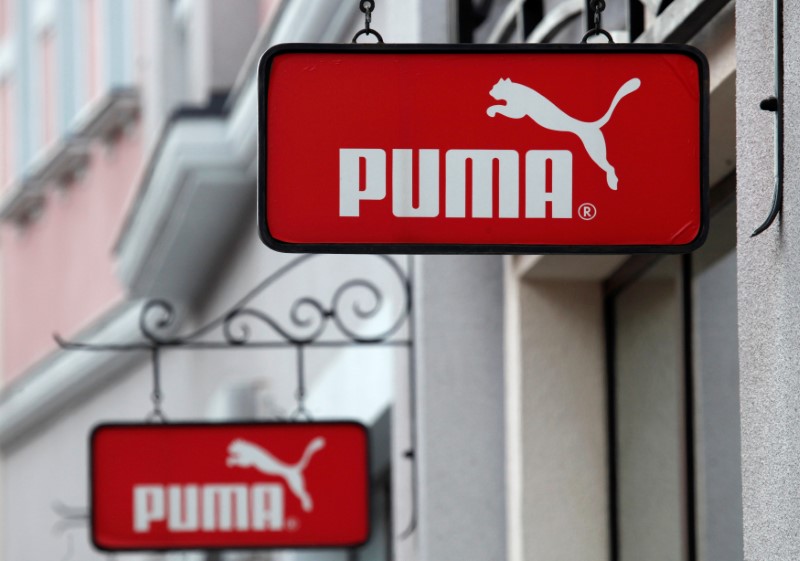Puma shares fall as Q3 sales miss forecasts
Investing.com -- Shares of Puma (ETR:PUMG ) fell over 3% on Wednesday after the company reported third-quarter sales growth that missed analyst expectations, despite a 5% rise largely driven by strong demand for running and soccer shoes.
Adjusted for currency effects, Puma’s sales reached €2.31 billion, nearly flat compared to the previous year and below the analyst forecast of €2.36 billion.
“PUMA's revenue momentum is fairly benign relative to sector and key competitors. The equity story is predicated on a tail end acceleration (starting in 4Q24E) for which visibility and confidence in sustainability into 2025 is mixed at this stage,” said analysts at RBC Capital Markets in note.
This came with a slight edge in EBIT performance, at €237 million compared to the €231 million market expectation, boosted partly by controlled operational expenses.
However, the modest nature of these results, paired with the company’s decision to maintain rather than elevate its guidance for the year, contributed to investor skepticism.
“Overall, we see this set of results as largely as expected, with the market expecting a more or less in-line print, reiterated guidance and positive commentary on Speedcat development – which will likely be the key focus of the conference call, we think,” said analysts at Morgan Stanley (NYSE:MS ) in a note.
Investors were likely looking for indications of strong growth potential or upwardly revised guidance, particularly given the challenges Puma faces from competitor advancements and a slower demand recovery in key regions like Europe and China.
Although Puma maintained its 2024 targets—expecting mid-single-digit sales growth and an EBIT range of €620-670 million—this steady guidance appears to have underscored concerns over Puma’s growth momentum and capacity to navigate economic pressures effectively.
The report also flagged geographic disparities in performance, with the Americas showing the strongest growth, particularly in Latin America, while EMEA saw a more limited gain due to subdued consumer sentiment and a challenging comparison base from the previous year.
In APAC, growth slowed, especially in Greater China, where consumer demand has remained tepid. The wholesale segment saw a mild improvement, but Morgan Stanley analysts pointed out that a major part of Puma’s wholesale recovery hinges on favorable sell-through and stronger orders in the latter half of the year.
“The athleisure trend having been reinforced by home office adoption and the rapidly-growing Asian middle class are two strong drivers for the sporting goods industry that we think are set to continue to grow at least in mid-single-digits,” said analysts at Stifel in a note.
Source: Investing.com
